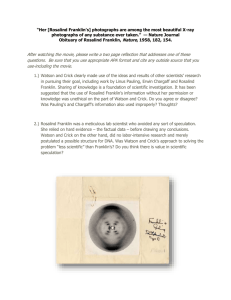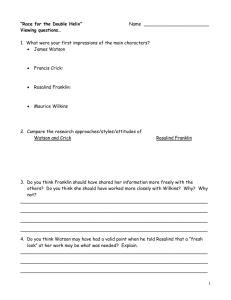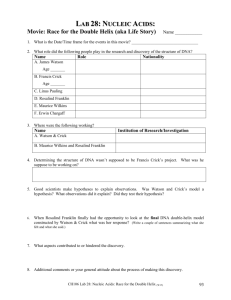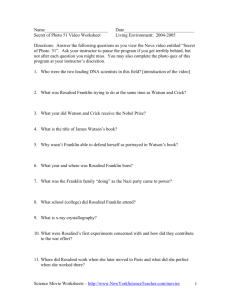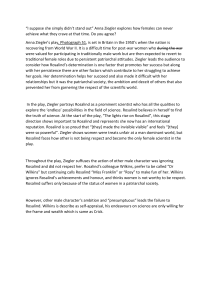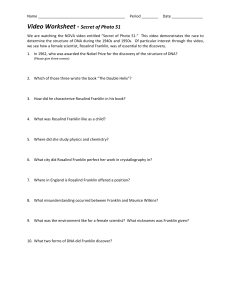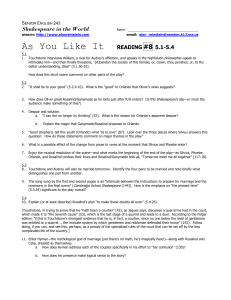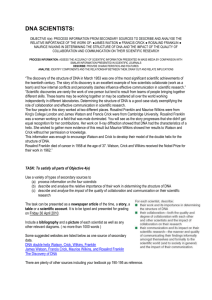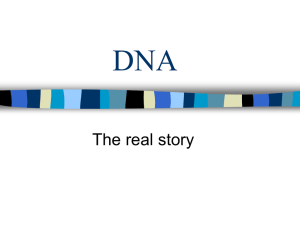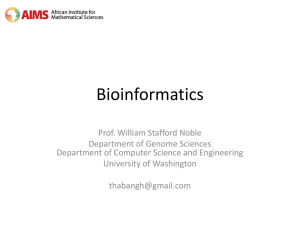Rosalind Franklin (Molecular Biologist)
advertisement
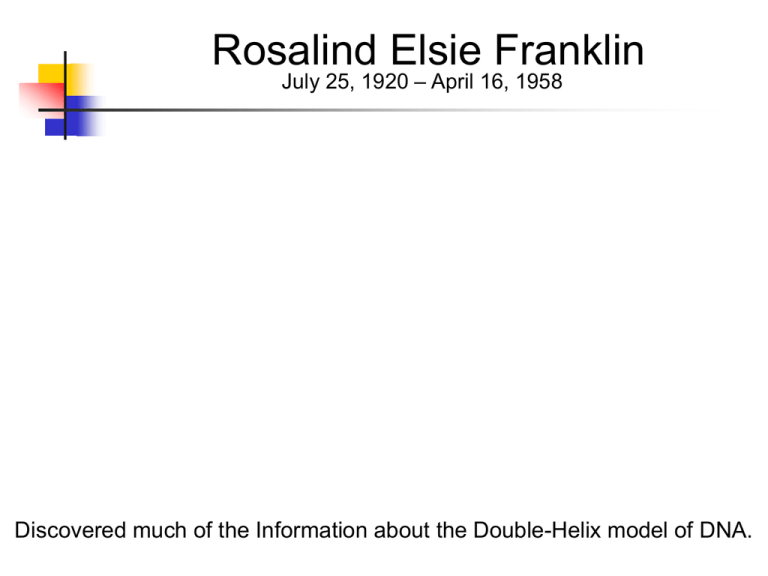
Rosalind Elsie Franklin July 25, 1920 – April 16, 1958 Discovered much of the Information about the Double-Helix model of DNA. Rosalind’s Early Life and Education Born on July 25, 1920 in London, England. Second of five children to Ellis Franklin and Muriel Waley. Attended St. Paul’s Girl’s School, one of the few schools in London that taught physics and chemistry. By age 15 she had decided she wanted to be a scientist. Her father wanted her to be a social worker but eventually agreed to pay for her education. 1928 she enrolled in Newnham College, a women’s college in Cambridge University. She graduated in 1941 and held a graduate fellowship for a year. 1942 began work at the British Coal Utilization Research Association studying carbon and graphite microstructures. 1945 she received her Ph.D. in physical chemistry from Cambridge University. University Involvement and Careers 1947-1950 she worked in Paris at the Laboratoire Central des Services Chimiques de L’Etat where she learned techniques in X-ray diffraction. 1951 returned to England to be a research associate at John Randall’s Laboratory at King’s College, Cambridge. She had trouble with a co-worker there, Maurice Wilkins. 1951-1953 she became close to solving the structure of DNA, but was beaten to publication by Crick and Wilkins. Her work had been accidentally shown to them and they rushed what they had discovered to publication, and cited Rosalind’s findings as a supporting journal. By this time she decided to move to J.D. Bernal’s lab at Birkbeck College until 1958. Accomplishments Published several papers and articles. Royal Society of London and the Royal Institution of Great Britain both requested her material to exhibit. 1959, also the Brussels World’s Fair requested models of virus molecules (a huge honor). While she was never actually awarded the Nobel Prize, it is agreed that had she lived longer she would have received it. In 1956 she was diagnosed with ovarian cancer. She continued to work for the next two years, including working on the polio virus, since she knew she was dying she didn’t think there was much of a risk. On April 6, 1958, at he young age of 37, Rosalind died. Sources McGrayne, Sharon Bertsch. Nobel Prize Women in Science. Carol Publishing Group: New York, 1993. 304-332. “Rosalind Franklin.” www.sdsc.edu/ScienceWomen/franklin “Rosalind Elsie Franklin.” library.thinkquest.org/20117/
